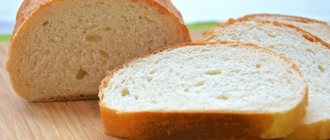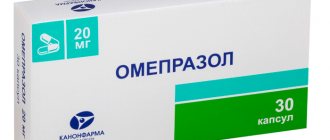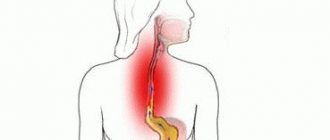Often a child asks not for what is healthy, but for what is tasty. Agree, you can hardly meet a child who will eat soup instead of sweets.
Ignoring a healthy and balanced diet leads to eating disorders in children. Children may eat little or a lot, abuse carbohydrate foods, and combine incompatible foods. For example, milk with sour fruits, chicken with fried potatoes. As a result, this can cause various digestive disorders: anorexia, bulimia, orthorexia, nausea, vomiting, and compulsive overeating.
Symptoms of eating disorders
Eating disorders in children can occur for various reasons, the main one being an unbalanced diet. If a child begins to eat little or his portions become too large, you need to pay attention to this and visit a pediatric gastroenterologist. After a series of studies, the doctor will make a conclusion about the child’s sufficient or insufficient nutrition, taking into account his age characteristics.
Insufficient or excessive appetite has a detrimental effect on the functioning of the digestive system. This provokes dysfunction not only of internal organs (stomach, liver, intestines, gallbladder, and spleen), but also affects the reproductive system (provokes hormonal imbalance, dysfunction of the reproductive system). Only a doctor can select a comprehensive treatment program to prevent complications due to disruptions in the gastrointestinal tract.
The main symptoms of eating disorders include:
- irritability, aggressiveness, worsening mood when it comes to eating or talking about food;
- uncontrollable feeling of hunger or appetite;
- increased gas formation (flatulence), bloating, frequent heartburn;
- vomiting, nausea, stomach cramps, intestinal colic.
Acute dyspepsia
Dyspepsia in young children often becomes acute. It appears due to a discrepancy between the volume and composition of the food consumed by the baby and the physiological capabilities of his digestive system. Signs of acute dyspepsia:
- regurgitation;
- diarrhea;
- heterogeneous stools, sometimes with mucus;
- slow growth.
The main method of control if your baby has acute dyspepsia is food fasting - you need to skip 1-2 feedings, replacing food with liquid.
Anorexia in children
Anorexia, as a rule, occurs due to the development of a negative attitude towards food in a child. For example, due to development:
- diseases of the digestive system (stomach ulcers, intestinal inflammation, helminthic infestation);
- diseases of the oral cavity (for example, stomatitis);
- body intoxication, allergies.
The disease can also appear as a result of various psychogenic factors (improper diet, unfavorable family environment). In particular, we all remember how in childhood our parents forced us to eat and how, sometimes, we didn’t want to. Strict rules in the family can also cause anorexia. By refusing to eat, a younger family member may protest the established rules.
In fact, it is impossible to understand the essence of what is happening without the participation of the attending physician. Self-medication or forced food intake can negatively affect the child’s psyche. This will only aggravate the situation and lead to the emergence of concomitant diseases, both somatic and mental.
Symptoms of anorexia include the appearance of skin problems, brittle hair and nails, and digestive problems (bloating, increased gas production) are diagnosed. Sleep disturbances, dizziness and fainting are also observed.
Clinical manifestations of anorexic condition can be represented by the following types:
- dysthymic - a manifestation of dissatisfaction with the process of eating, whims and sobs are observed, categorical refusals of breakfast, lunch, dinner or snacks, up to hysterical behavior;
- regurgitation - causeless regurgitation during feeding in the absence of pathologies of the gastrointestinal tract or chronic diseases.
There are also active and passive refusals to eat. The first is characterized by a clear manifestation of refusal to eat (the child spits out food, turns away from the plate, does not sit still, turns over dishes and furniture). The second manifests itself as partial or complete pickiness in food, refusal to eat certain foods, and an open reluctance to chew or swallow cooked food.
Long-term development of anorexia leads to significant weight loss and causes problems with metabolism and the functioning of the digestive tract. There is a deterioration in the child’s well-being (fatigue, lethargy, decreased concentration and performance).
Treatment should only be carried out under the guidance of a gastroenterologist: a gradual weight gain program is selected, drug therapy and vitamin therapy are indicated. In some cases, consultation with a psychologist (psychotherapist) is necessary.
Ignoring anorexia can lead to osteoporosis, fainting, and ulcers of the stomach, intestines or duodenum.
Symptoms of the disease
The general symptoms of functional dyspepsia can be divided into several main areas, depending on the clinical manifestations:
- Ulcer-like – characterized by localized pain in the stomach area of the anterior abdominal wall. An exacerbation occurs after eating food and drugs that negatively affect the child’s intestinal tract;
- Reflux-like – after eating, belching, nausea, vomiting are often observed, and there is a feeling of bloating;
- Dyskenetic – there is regular pain in the stomach, intensifying after eating. There is a lack of acceptance of fatty and dairy foods;
- Non-specific – does not occur in children.
Symptoms may manifest differently depending on age and the nature of the disease. Therefore, in order to better understand how this disease progresses and identify its first signs, you need to understand in detail the manifestations of this disease depending on age.
Dyspepsia in children of the first year of life
So, simple dyspepsia occurs quite often in the first years of their life. It can occur in different ways: develop instantly or progressively. The following symptoms may be warning signs of this disease:
- defecation begins to occur more often;
- there is a decrease in appetite;
- anxiety may be present;
- regurgitation becomes more frequent after eating.
After just a few days, the frequency of bowel movements can reach up to 7 times a day. Moreover, it becomes more liquid, its color and smell change.
Mucus may be present in the stool. Minor regurgitation is replaced by regular vomiting. Appetite decreases to the point of complete refusal to eat. Severe colic in the stomach is often disturbing; the child shows this by stretching his legs up and crying.
Against the background of this disease, many other diseases can develop, in particular, thrush and stomatitis.
In premature or weakened babies, dyspepsia occurs in a more acute form. An increase in temperature is observed, the stool becomes watery, and its frequency can reach up to 20 times a day.
Frequent vomiting, high temperature together with diarrhea lead to significant loss of fluid - dehydration of the body, retraction of the large fontanel, and weight loss. The face changes, pallor appears, his gaze will be fixed on one point, his reflex functions are significantly reduced. Such standing without timely treatment can be disastrous for the baby.
Functional dyspepsia in adolescents
Older children experience frequent abdominal pain and weakness. As a rule, there is rapid satiety, after eating there is nausea, a feeling of heaviness, and belching.
In advanced stages of digestive disorders, alternation of constipation and diarrhea is observed, headaches are present, and the likelihood of developing duodenogastric reflux increases. It should be noted that the situation is aggravated by the stressful state of adolescents.
Bulimia in a child
Bulimia most often develops against the background of anorexia and is a constant desire to satisfy hunger. The child always wants to eat, which leads to overeating, after which there is often a feeling of guilt for what he has eaten. As a result, the child may self-induce vomiting or use laxatives. Over time, a fear of obesity develops.
Only a doctor can distinguish this pathology from anorexia. Both conditions have similar symptoms. Often loved ones do not recognize the awakened desire for eternal hunger, attributing it to childhood hyperactivity. However, eating disorders can be recognized by eating a large amount of food at one time and not gaining weight.
As a rule, children often have a desire to eat alone (in order to hide the amount consumed and not be judged by peers and parents). Bulimia is accompanied by tooth loss, oral diseases, vitamin deficiency, mental disorders, pathologies of the heart and esophagus.
A doctor should treat the disease by analogy with the treatment of anorexia. Sometimes a child needs psychological help.
Orthorexia
The desire to eat right can gradually develop into an obsession, which provokes the occurrence of diseases of the gastrointestinal tract. Those who suffer from orthorexia may avoid eating meat or dairy products for a long period. This kind of diet soon leads to a lack of minerals and nutrients in the body. This threatens the emergence of serious diseases, because the child’s body is still developing. The musculoskeletal system, nervous and cardiovascular systems are affected, and hormonal imbalances are observed.
If a child or his parents are obsessed with healthy eating, it is necessary to select a menu with the participation of a gastroenterologist. This will help you find the optimal balance of nutrients in your daily intake for the full formation of all organs and systems.
Compulsive overeating
Uncontrolled consumption of food, despite the feeling of fullness, is called compulsive overeating. It can occur in those who suffer from anorexia or bulimia. Its signs include situations when children eat:
- too fast;
- to the feeling of overeating;
- always (regardless of whether they are hungry or not);
- often alone to hide the amount of food consumed.
An eating disorder can be periodic or permanent, but in both cases it requires medical attention. Situations are often observed when a child can eat up emotions that overwhelm him (boredom, sadness or joy).
The reasons for the development of compulsive overeating in children can be different: psychological, social, cultural. To combat it, children need a correctly structured diet, regular meals, and a healthy lifestyle.
American scientists, in the course of a study on the topic of overeating, concluded that against its background there is a high level of suicidal cases and an increased risk of developing depressive disorders. With age, untreated pathology can threaten the development of diabetes mellitus, unstable behavior, the impossibility of social realization, and the development of complexes.
What is dyspepsia
Dyspepsia is a symptom complex of digestive disorders. This concept is preliminary.
It is used in the initial stages of in-depth diagnostics. In the future, after a series of analyzes and studies, this diagnosis can be deciphered:
- organic dyspepsia – gastritis of various forms, peptic ulcer;
- functional dyspepsia – disorders of the digestive system.
Today, it is quite difficult to get a detailed answer to the question of what functional dyspepsia is and why it occurs in children of different ages.
This is not possible because the pathogenesis of the disease has not yet been fully studied. However, most of the development mechanisms have already been deciphered today.
Functional dyspepsia in children can manifest itself in different ways and include many symptoms, such as indigestion, heaviness after eating, a feeling of early satiety, frequent belching and sometimes nausea, so careful diagnosis and treatment is required.
Pica
Unhealthy cravings for inedible substances are called perverted appetite. This diagnosis can be made for children as young as one year old, when the child may begin to eat paper, coal, soil or insects. Sometimes kids pick up cigarette butts and swallow metal objects.
Even if this is an isolated case, the child needs to be shown to a doctor. This will help to promptly eliminate the consequences of what happened to the child’s body. For example, eating hair can block the functioning of the intestines, and lumps of earth can infect internal organs due to the presence of pathogenic bacteria in them. And what you eat can be toxic and cause poisoning: increased body temperature, nausea, vomiting, trembling and body aches.
Perverted appetite can develop in children who are diagnosed with:
- mental illness;
- stress associated with a tense family situation, adaptation to a new environment due to moving to another city.
Sometimes doctors associate the development of perverted appetite with a lack of vitamins and minerals in the child’s body. In all cases, this eating disorder must be treated. Without diagnostics, it is impossible to establish the cause of what is happening. As practice shows, in some cases, what happens can even be caused by a lack of certain chemical elements (zinc, iron) in the diet and lead to the development of dangerous diseases (in particular,
How to increase hemoglobin in a child? anemia).
Treatment of eating disorders in children
Eating disorders in children are successfully treated at ON Clinic medical centers. Gastroenterologists make a diagnosis after conducting a series of studies (blood and urine tests, ultrasound of the abdominal cavity). After confirmation of the diagnosis in all cases, therapy involves the participation of parents and, if necessary, other medical specialists.
A timely response to the problem will preserve the child’s health, help to quickly overcome one or another digestive disorder and return to a full life. You can make an appointment by phone or using the appointment form at the medical center in your city.
Treatment of functional dyspepsia in children
Mild functional dyspepsia in children is treated on an outpatient basis. The basis of treatment is nutrition selection. Most often, a simple adjustment is enough. But in some cases it is required:
- discontinuation of all products that may cause problems. Undesirables include: hot seasonings, processed foods, smoked foods, carbonated drinks;
- compliance with the diet and diet, but when choosing a diet, you need to take into account age, so that the sick child has the opportunity to receive all the nutrients he needs, according to his age;
- It is recommended that infants reduce the amount of food they eat and replace one or two feedings with water or tea;
- Glucose-saline solutions are recommended for babies;
- Enzymes are prescribed to improve digestion;
- sorbents – remove toxins from the body;
- antispasmodics to relieve abdominal pain.
However, the dosage of all medications must be age-appropriate, and after the first signs of improvement, bifidobacteria and lactobacilli are recommended.
The severe version is treated in a hospital setting. Therapy is prescribed taking into account the age and characteristics of the disease. In the most difficult situations, plasma transfusion and antibiotic therapy may be required.
Anyone who suffers from a disease must lead a special lifestyle. If this concerns infants, temperature control, careful examination and monitoring of dynamics are required.










